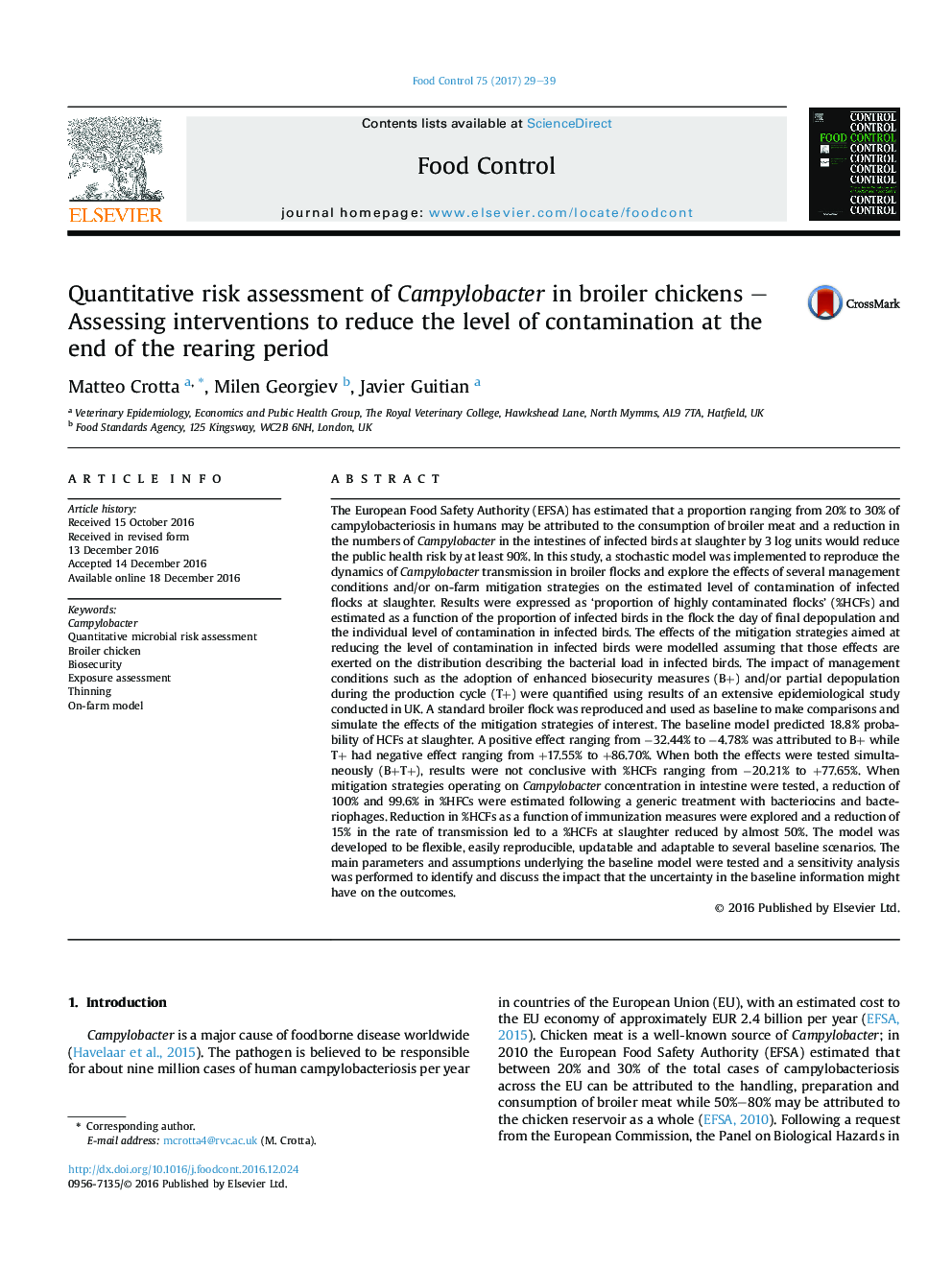| Article ID | Journal | Published Year | Pages | File Type |
|---|---|---|---|---|
| 5767387 | Food Control | 2017 | 11 Pages |
Abstract
The European Food Safety Authority (EFSA) has estimated that a proportion ranging from 20% to 30% of campylobacteriosis in humans may be attributed to the consumption of broiler meat and a reduction in the numbers of Campylobacter in the intestines of infected birds at slaughter by 3 log units would reduce the public health risk by at least 90%. In this study, a stochastic model was implemented to reproduce the dynamics of Campylobacter transmission in broiler flocks and explore the effects of several management conditions and/or on-farm mitigation strategies on the estimated level of contamination of infected flocks at slaughter. Results were expressed as 'proportion of highly contaminated flocks' (%HCFs) and estimated as a function of the proportion of infected birds in the flock the day of final depopulation and the individual level of contamination in infected birds. The effects of the mitigation strategies aimed at reducing the level of contamination in infected birds were modelled assuming that those effects are exerted on the distribution describing the bacterial load in infected birds. The impact of management conditions such as the adoption of enhanced biosecurity measures (B+) and/or partial depopulation during the production cycle (T+) were quantified using results of an extensive epidemiological study conducted in UK. A standard broiler flock was reproduced and used as baseline to make comparisons and simulate the effects of the mitigation strategies of interest. The baseline model predicted 18.8% probability of HCFs at slaughter. A positive effect ranging from â32.44% to â4.78% was attributed to B+ while T+ had negative effect ranging from +17.55% to +86.70%. When both the effects were tested simultaneously (B+T+), results were not conclusive with %HCFs ranging from â20.21% to +77.65%. When mitigation strategies operating on Campylobacter concentration in intestine were tested, a reduction of 100% and 99.6% in %HFCs were estimated following a generic treatment with bacteriocins and bacteriophages. Reduction in %HCFs as a function of immunization measures were explored and a reduction of 15% in the rate of transmission led to a %HCFs at slaughter reduced by almost 50%. The model was developed to be flexible, easily reproducible, updatable and adaptable to several baseline scenarios. The main parameters and assumptions underlying the baseline model were tested and a sensitivity analysis was performed to identify and discuss the impact that the uncertainty in the baseline information might have on the outcomes.
Keywords
Related Topics
Life Sciences
Agricultural and Biological Sciences
Food Science
Authors
Matteo Crotta, Milen Georgiev, Javier Guitian,
